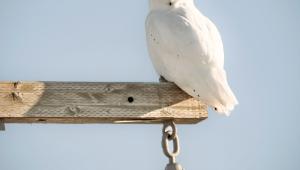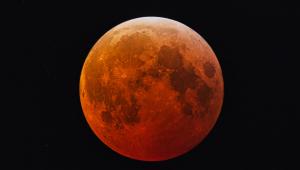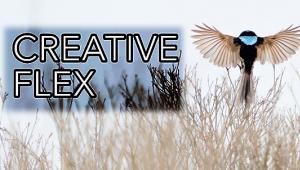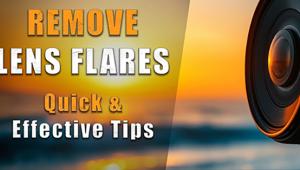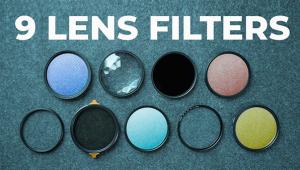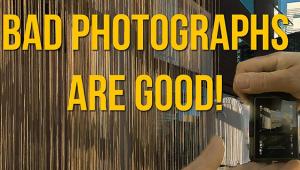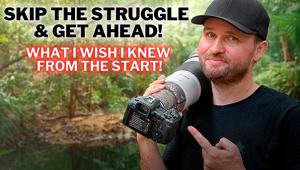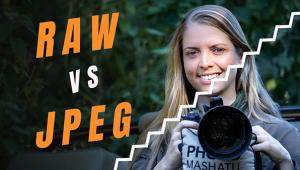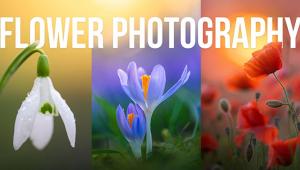Mix And Match
Adapters For Using Lenses On Different Camera Bodies
Those of us who use a variety of formats of cameras typically have an extensive array of different brands or makes of lenses in our collection. Often, we might want to use one brand or format lens on another brand or size of camera body, but for years we have been told this is not possible. Since 35mm SLR cameras all have a similar flange to film distance, it normally is not feasible to adapt one 35mm lens to another brand of body, since the lens would not be able to focus to infinity. But, some makes of 35mm lenses can be used with another brand of SLR camera with an adapter. Additionally, medium format lenses have a longer flange to film distance, so these larger format lenses often can be adapted to cover the smaller 35mm format and still retain the full infinity to close focusing range. But, internal coupling for program automatic exposure and flash automation is lost when adapting lenses to another brand or format camera. Easy Adapt For 4x5 |
|||
Mix & Match 35mm With a medium format lens/35mm SLR body combination you don't sacrifice quality. Typically, good rollfilm SLR lenses are similarly well corrected as the 35mm format lenses and, since they will only be used for a smaller 24x36mm format image field, any minor margin or edge aberrations will be cropped out. For instance, if you use an 80mm medium format "normal" lens with an adapter for a 35mm SLR camera you will have a medium telephoto lens that's an excellent focal length for portraits. Or a 200mm medium format telephoto would become a 4x telephoto when adapted to 35mm format. Each of your medium format lenses would now have a dual function depending upon which format camera it is attached to. Since these adapters do not transmit normal functions between the lens and camera you do lose the 35mm camera's automatic stop-down aperture feature at the instant of making an exposure. Instead, you will have to manually stop down the medium format lens prior to taking a picture. This makes using a medium format lens adapted to a 35mm SLR slower operating and the viewfinder image would be dimmer because the lens is stopped down. This should be a minor sacrifice for the convenience of using one lens on two entirely different camera systems. Current Adapter Sources If you access their web site at www.novoflex.com, check out the Adapter section under "Product" where you can obtain more detailed data. A particularly nice feature at this site is the ability to determine all of the available camera body/lens combination possibilities by first entering the brand/make of SLR camera you have, then, via a pull down menu, determine which lenses can be used on that body. Another make of adapters have been offered in Europe for many years from the firm Zrkendorfer. They now offer adapters under the more manageable Zrk brand name in the U.S.A. If you have both a 35mm and a rollfilm SLR camera, Zrk Mount Adapters permit using the larger size rollfilm camera lenses on the 35mm SLR. Not only does this save you money, but you only have to carry one lens for both cameras. Zrk Mount Adapters have a front mechanism to accept the larger diameter rollfilm camera lens and a rear mount to fit the 35mm camera body. The spacing will match the optical register difference (that is the flange/film plane distance) between the two cameras. Zrk front fittings are available to accept the lenses of the Hasselblad 2000 FC, Hasselblad 500 CM, Mamiya 645, Pentacon Six, and some of the Pentax 6x7 lenses. Zrk rear fittings are available for practically all current 35mm SLR cameras including: Canon, Contax, Leica R, M 42, Minolta, Nikon, Olympus, Pentax, Rollei, Yashica, etc. They also can be used with movie cameras with C-mount fitting and video camcorders having the Sony M 3 bayonet. The focal length and apertures on a medium format lens adapted down to 35mm format remain the same as when used on a medium format camera. There is no light loss since the actual film to lens diaphragm distance remains the same. A tele-extender (or extension tubes) will alter the film to lens diaphragm distance, thus there is a light loss resulting in a change in f/stop. This is not the situation with a medium format to 35mm lens adapter. An 80mm medium format lens remains 80mm when used on a 35mm format. A 200mm medium format lens adapted to 35mm is still a 200mm. Since a 200mm is a 4x telephoto for 35mm format, the lens' actual focal length just seems a bit longer when used on the smaller 35mm format. (For example, an 80mm on medium format is a "normal" focal length, but the same 80mm medium format lens when used on 35mm is now a slightly longer 80mm telephoto lens, a focal length often used for portraits.) Another Zrk adapter is intended for architectural subjects with medium format cameras. For instance, a Mamiya Shift lens f/4-50mm can be modified for use on Hasselblad cameras with focal plane shutter. This adapter allows +/- 16mm shift and a 360 lens rotation of the Mamiya Shift lens. With the broad range of adapters these firms offer, you must be specific about the exact medium format lens and 35mm SLR body you need to adapt to obtain the exact combination you require. Further information about these interesting lens/camera adapters can be obtained from these firms' web sites. Log onto Novoflex.com or Zoerk.com for the latest data about the adapters. Or, contact the U.S.A. importer of Novoflex products, HP Marketing Corp. at (973) 808-9010 or www.hpmarketingcorp.com. |
- Log in or register to post comments








